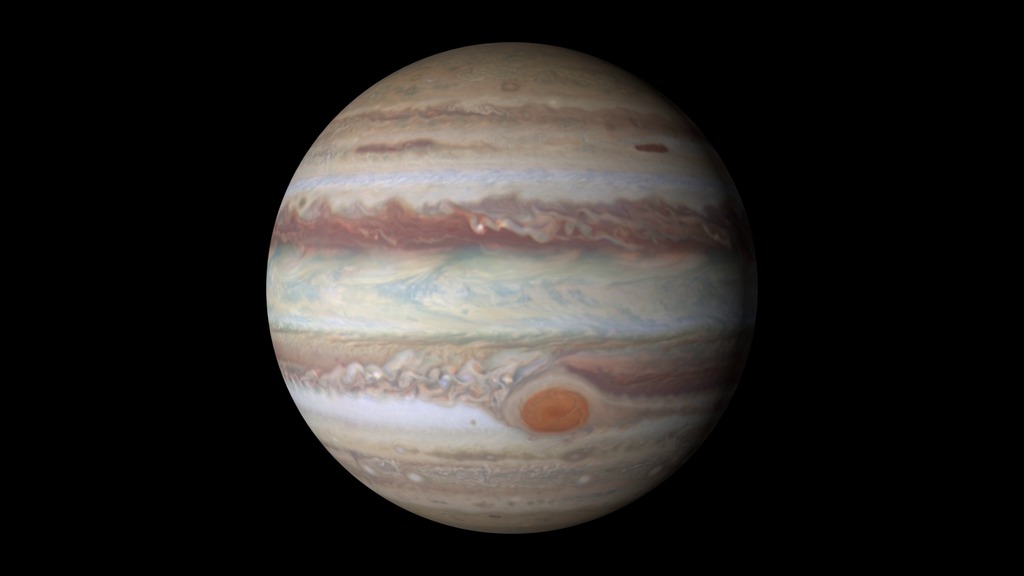Planetary Portrait

The Hubble Space Telescope provides new maps of Jupiter.
Scientists using NASA’s Hubble Space Telescope have produced new maps of Jupiter, the largest planet in our solar system. The maps are the first products to come from a program to study the solar system’s outer planets each year using Hubble. Jupiter, Uranus and Neptune are being studied first. Saturn will be added later. The observations are designed to capture a broad range of features, including winds, clouds, storms and atmospheric chemistry. Collecting these yearly images—essentially the planetary version of annual school picture days for children—will help current and future scientists see how these giant worlds change over time. Watch the video for an up-close look at the planet.
Explore views of Jupiter in this animation produced from observations made using Hubble.

The new maps confirm that Jupiter's Great Red Spot (shown above) continues to shrink and become more circular, as it has been doing for years.

In Jupiter’s North Equatorial Belt, scientists spotted a rare wave in the atmosphere that had been seen there only once before.

This global map of Jupiter was made using multiple images taken by Hubble.
For More Information
See NASA.gov
Credits
Please give credit for this item to:
NASA's Goddard Space Flight Center
Video and images courtesy of Space Telescope Science Institute
-
Writer
- Elizabeth Zubritsky (ADNET Systems, Inc.)
-
Scientists
- Amy A. Simon (NASA/GSFC)
- Michael H. Wong (University of California at Berkeley)
- Glenn Orton (NASA/JPL CalTech)
-
Animator
- Greg Bacon (STScI/Aura)
-
Video editor
- Dan Gallagher (USRA)
-
Project support
- Michael Randazzo (Advocates in Manpower Management, Inc.)
- Aaron E. Lepsch (ADNET Systems, Inc.)
Release date
This page was originally published on Tuesday, October 13, 2015.
This page was last updated on Wednesday, May 3, 2023 at 1:49 PM EDT.
